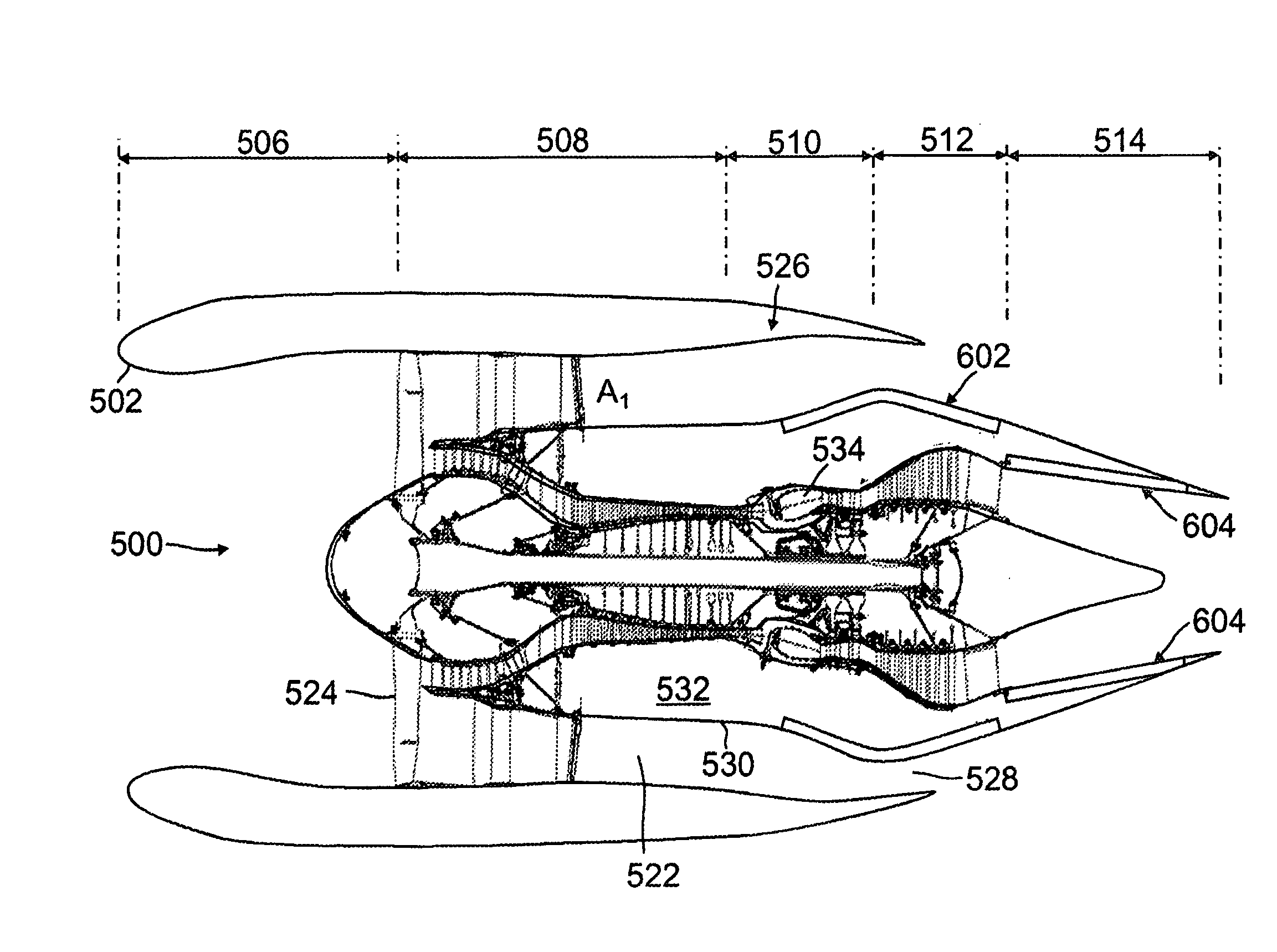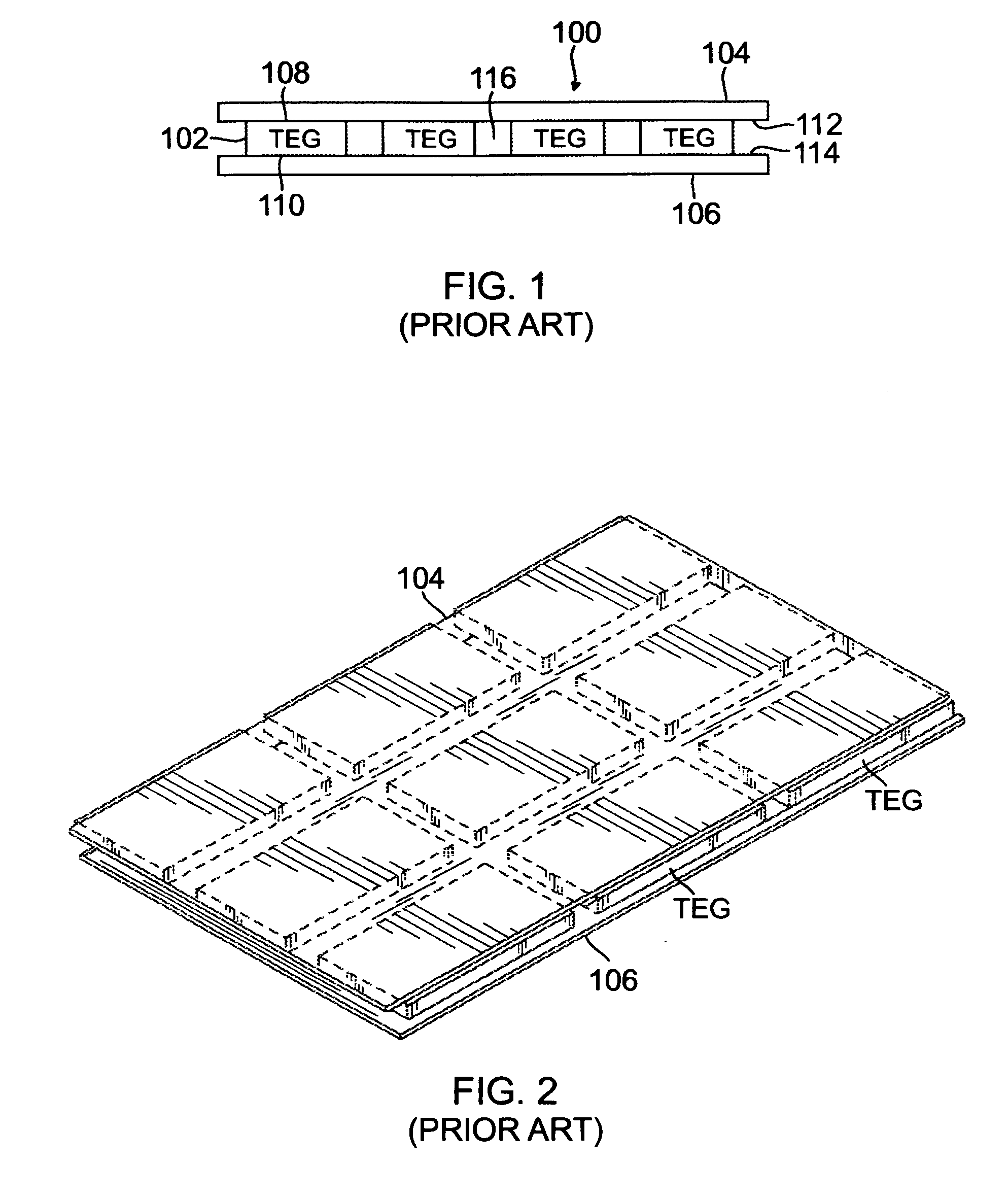Thermal integration of thermoelectronic device
- Summary
- Abstract
- Description
- Claims
- Application Information
AI Technical Summary
Benefits of technology
Problems solved by technology
Method used
Image
Examples
Embodiment Construction
[0027]Embodiments of the present disclosure now will be described more fully hereinafter with reference to the accompanying drawings. However, many different embodiments are contemplated and the present disclosure should not be construed as limited to the embodiments set forth herein; rather, these embodiments are provided so that this disclosure will be thorough and complete and better convey the scope of the disclosure to those skilled in the art.
[0028]In its broadest sense, this disclosure presents an improved thermoelectric device having the ability to increase the efficiency of conventional thermoelectric converters. The disclosure also encompasses an engine configuration including an improved thermoelectric assembly, comprising an array of such devices, disposed in a strategically located environment in the engine between hot and cold sources of temperature.
[0029]FIG. 4 shows the improved thermoelectric device ITD according to the present disclosure. In general, each, or both,...
PUM
 Login to View More
Login to View More Abstract
Description
Claims
Application Information
 Login to View More
Login to View More - R&D
- Intellectual Property
- Life Sciences
- Materials
- Tech Scout
- Unparalleled Data Quality
- Higher Quality Content
- 60% Fewer Hallucinations
Browse by: Latest US Patents, China's latest patents, Technical Efficacy Thesaurus, Application Domain, Technology Topic, Popular Technical Reports.
© 2025 PatSnap. All rights reserved.Legal|Privacy policy|Modern Slavery Act Transparency Statement|Sitemap|About US| Contact US: help@patsnap.com



